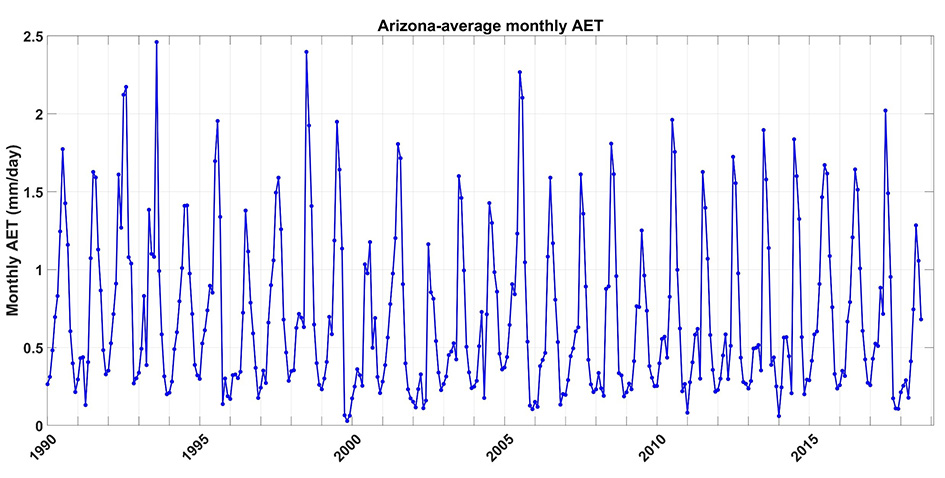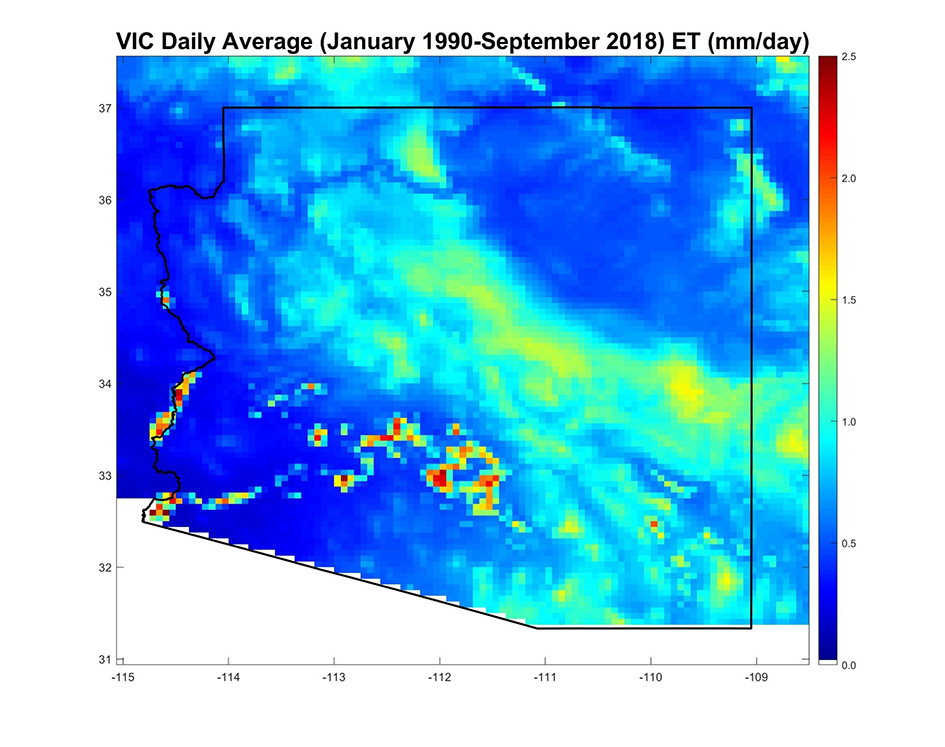Background
This study investigates the merits of the “lake-effect” concept via the use of a robust hydrologic land surface model and a techno-economic analysis of the water production. This research project aimed to develop a proof-of-concept for an innovative use of existing technology and available saltwater resources towards the generation of clean freshwater.
Through this work, we model the saltwater lake impact on local evaporation dynamics, the potential condensate yields at the local scale, and the impact of increased evapotranspiration on regional precipitation, focusing on the southwestern U.S.
The intensification of the hydrological cycle, when combined with population growth and increasing water demand, will further exacerbate the complexity of the water dynamics in the drylands of Arizona, New Mexico, and West Texas. To mitigate this trend, the project team plans to implement a simple yet novel approach through which they can assess the impact of artificially created inland bodies of water on the local and regional water budget.

Figure 1: To date the team has modeled the rainfall patterns for Arizona in preparation for modeling the impact of a large artificial body of water on the pattern.
Approach
The project team will quantify the impact of artificially created evaporation pools on local dynamics and trends of evapotranspiration (ET) and soil moisture (SM), assess the potential freshwater capture via evaporation distillation, quantify the impact of the increased evapotranspiration on regional precipitation patterns, and assess the potential total water production from a techno-economical perspective.
The research project aims to develop a proof-of-concept for:
- The generation of clean freshwater via evaporation-induced rainfall (regionally).
- The use of condensers or evaporation distillation systems (locally).
Focused/specific goals of this project:
- Model “lake-effect” impacts on local/regional water dynamics, focusing on two key hydrologic variables: ET and SM.
- Model potential freshwater capture using evaporation distillation, solar stills or similar processes for generation of potable water for local usage.
- Assess the impact of increased ET on regional precipitation patterns using an empirical relationship between precipitation and ET. Perform a techno-economic analysis of the total potential water production. Use the Variable Infiltration Capacity (VIC) hydrologic model (without & with lake algorithm) to quantify the impact of artificially created evaporation pools on dynamics and trends of ET and SM.

Figure 2: Current patterns indicate strong linkage with the Sea of Cortez, which is very promising.
Accomplishments
In achieving the work elements, SwRI has gained expertise in the following areas:
- Development of a validated hydrologic model to quantify the impact of an artificial body of water on local dynamics and trends of both evaporative volume of water and soil moisture.
- Modeling potential freshwater capture using solar condensers for generation of potable water for local usage.
- Empirical evaporation condensation collection experiment.
- Comparison of the numerical simulations for the freshwater generation with the experimental data.
- Quantification of the impact of the increased evapotranspiration on regional precipitation patterns using an empirical relationship between precipitation and evapotranspiration.

